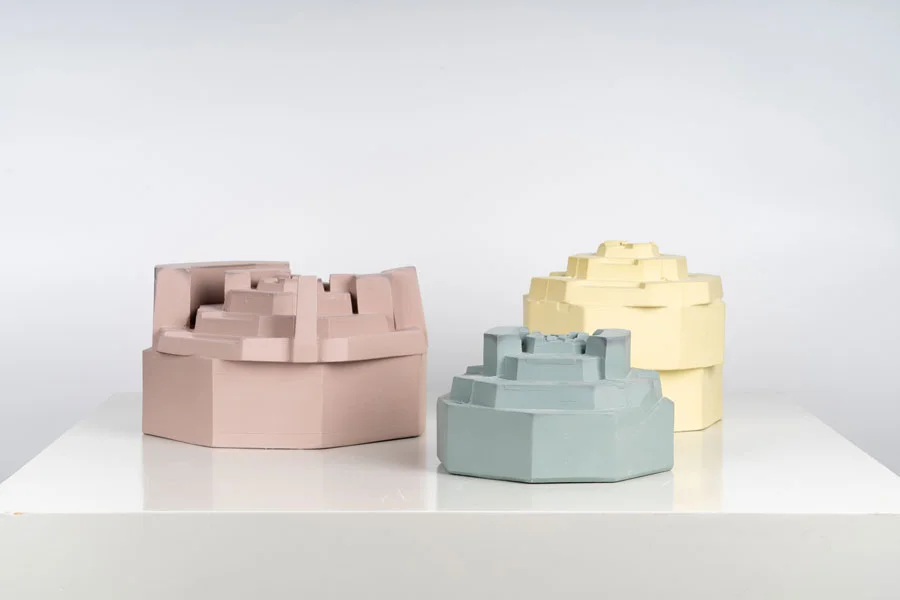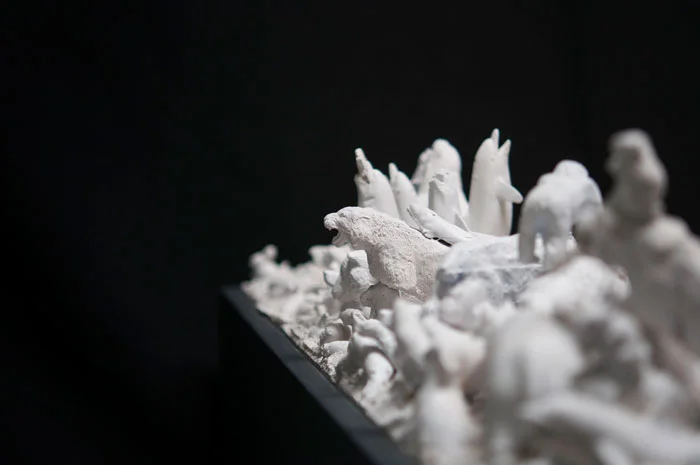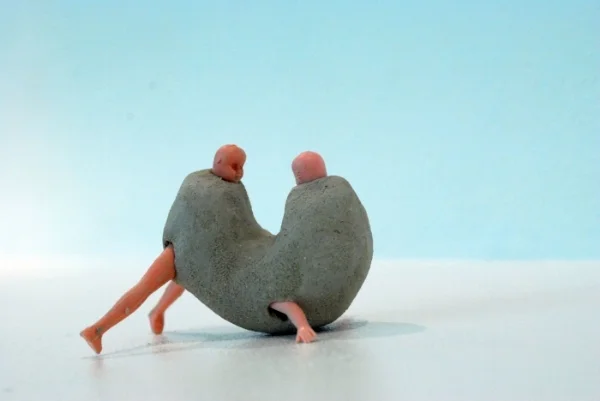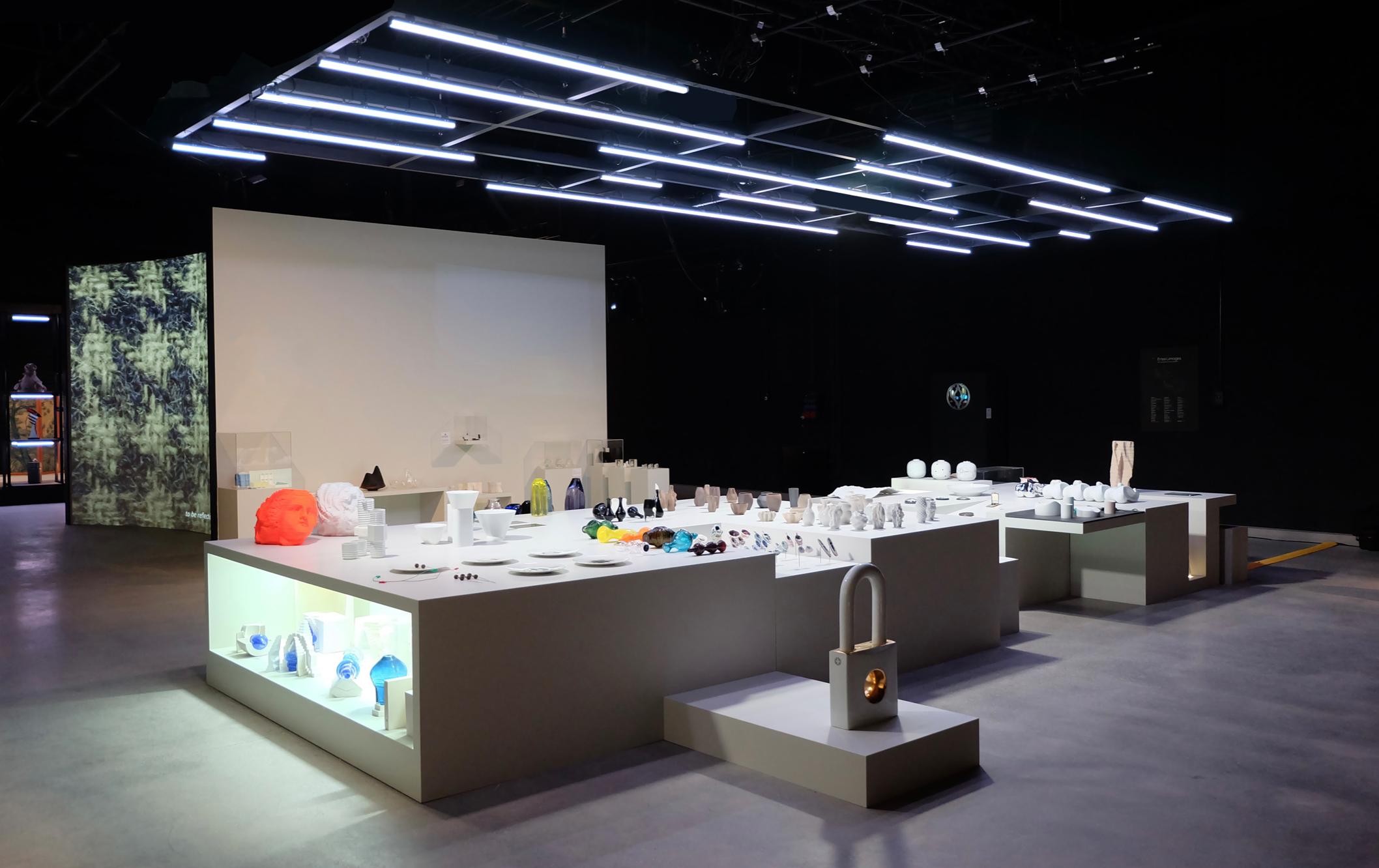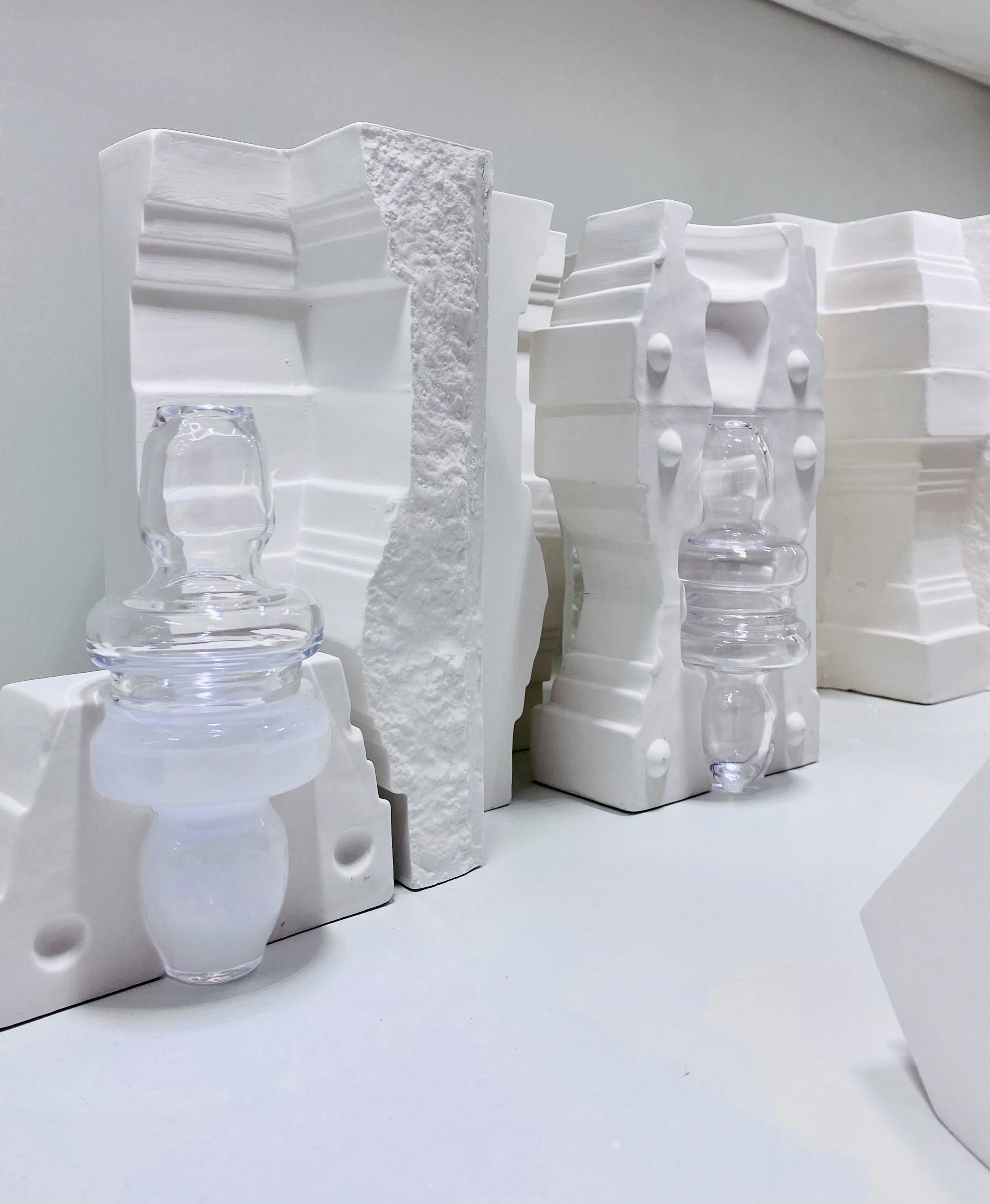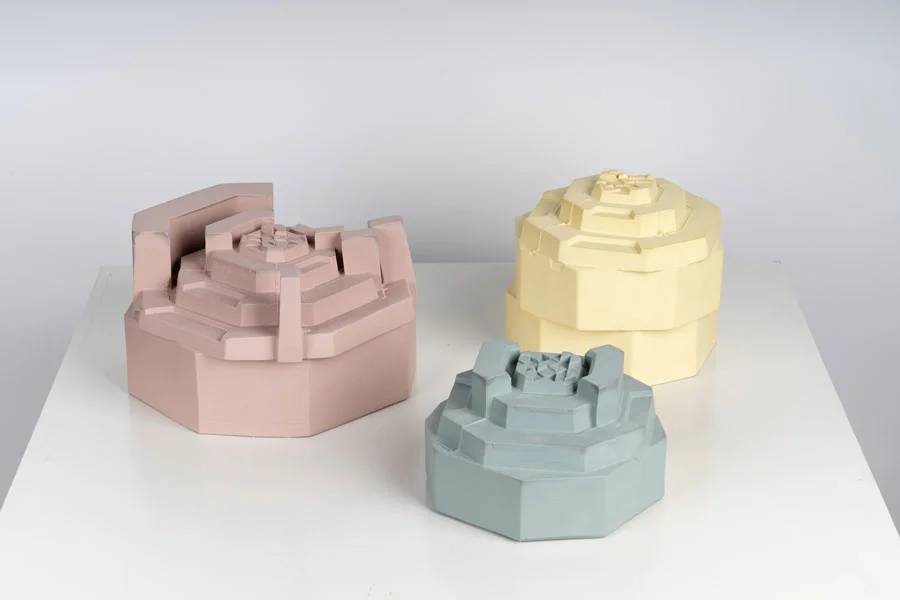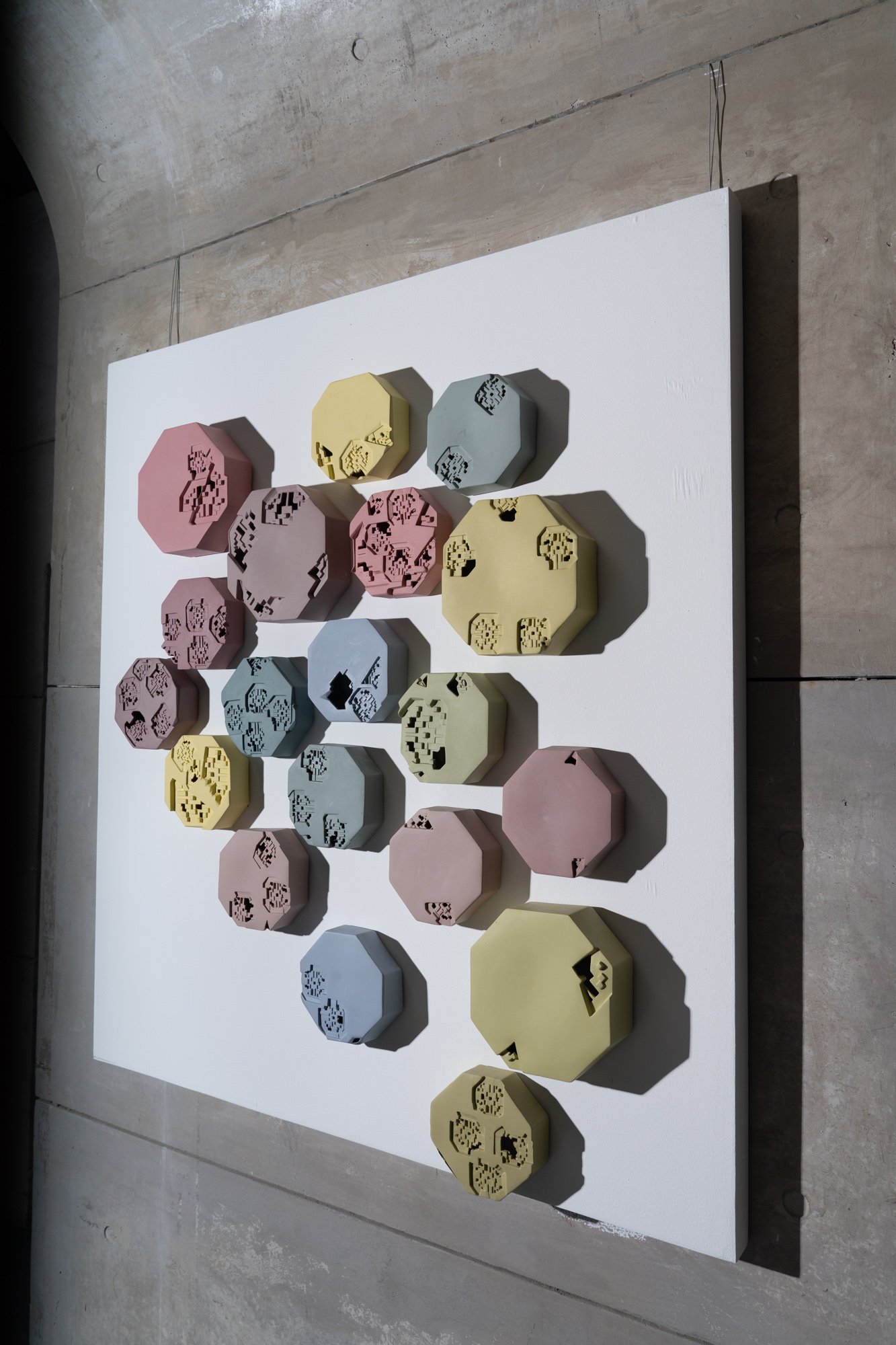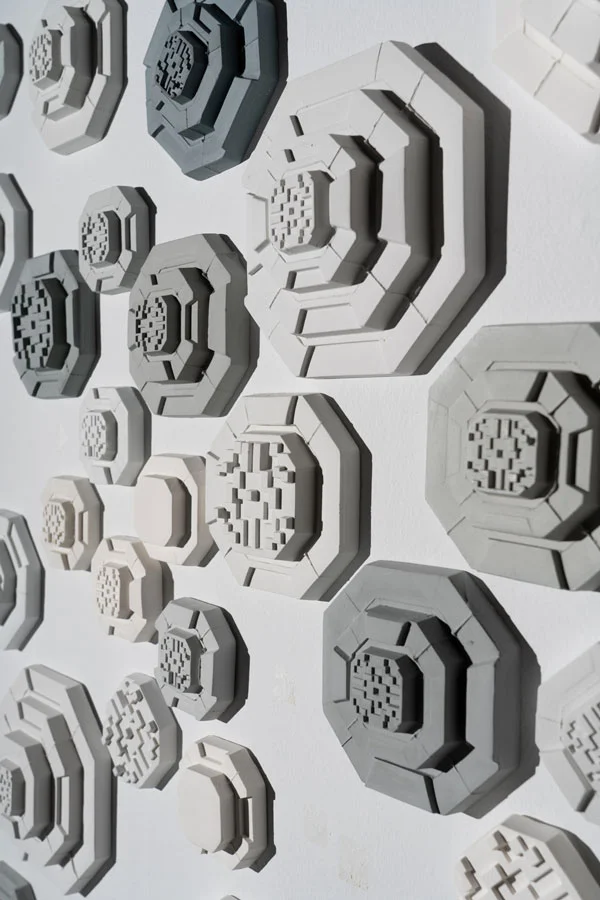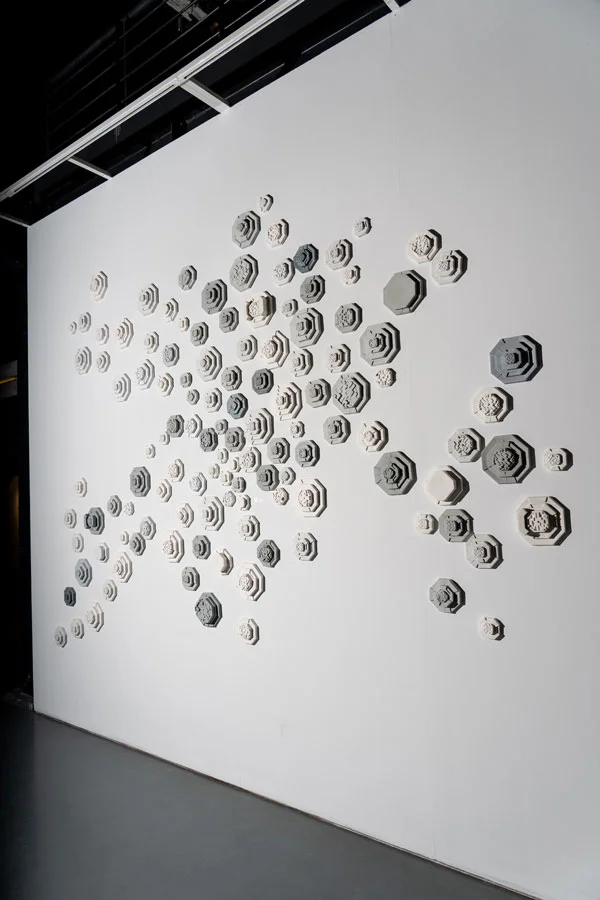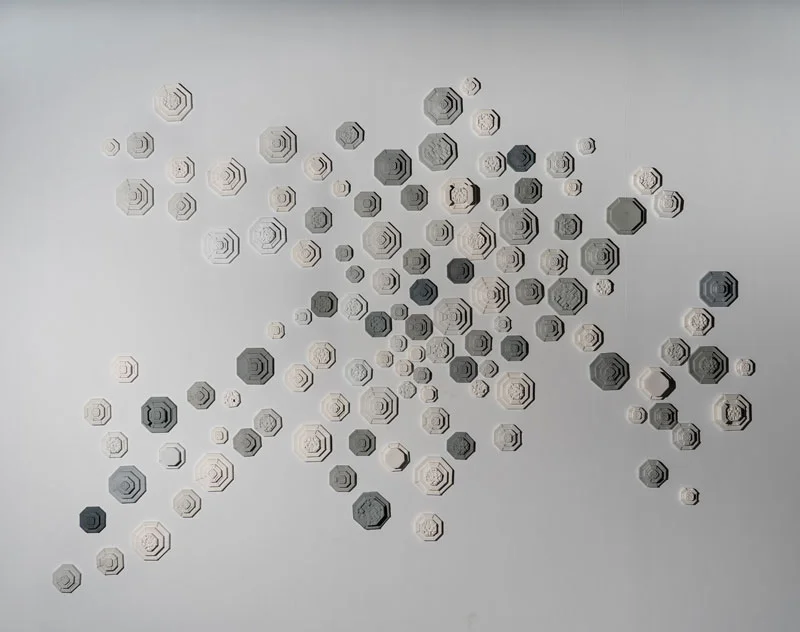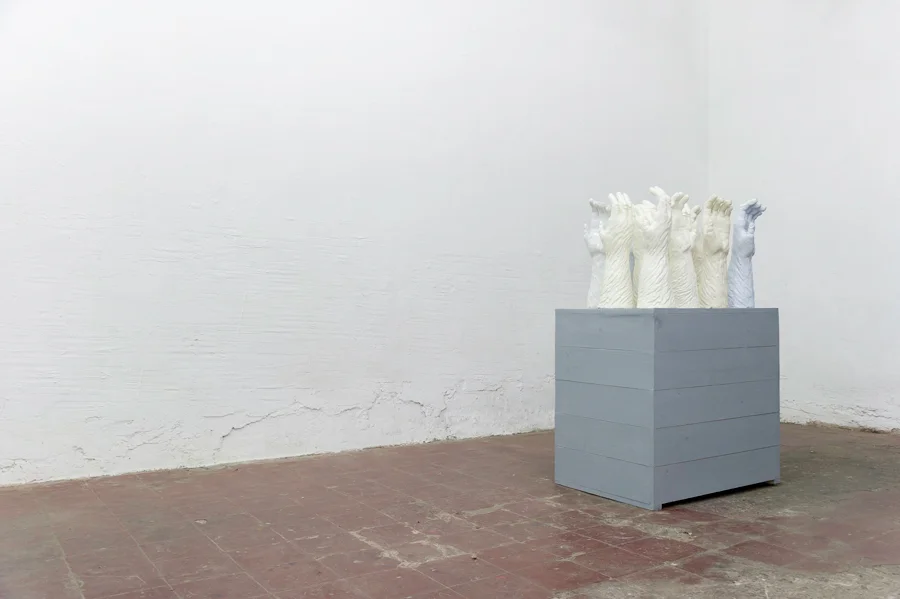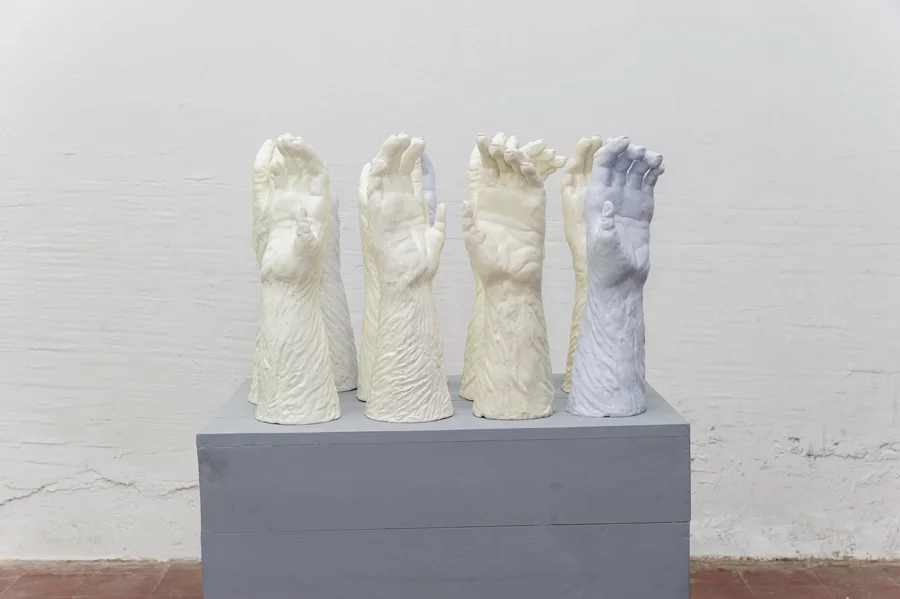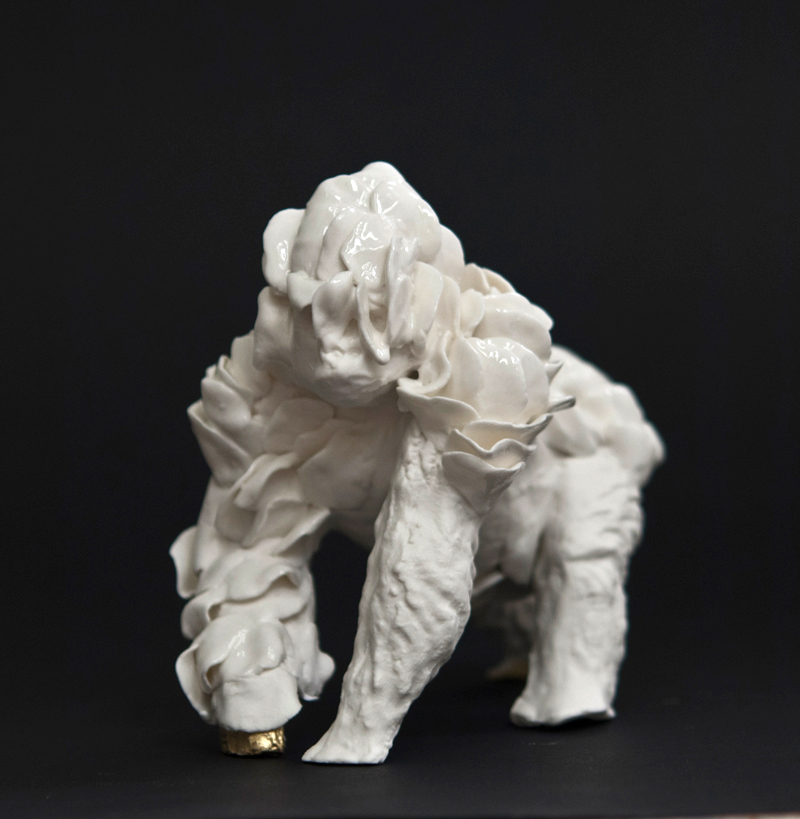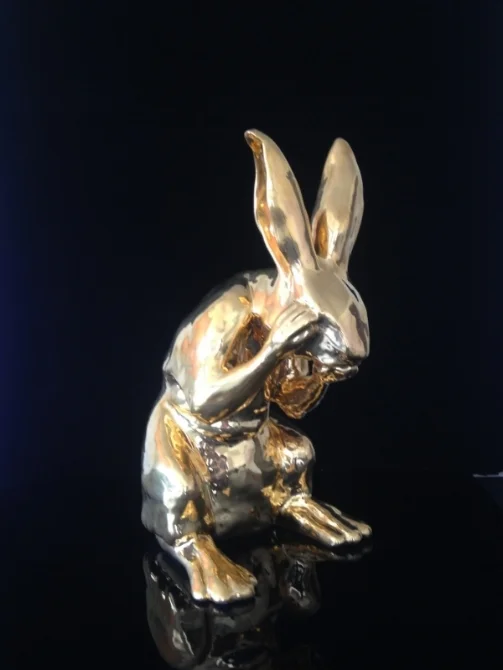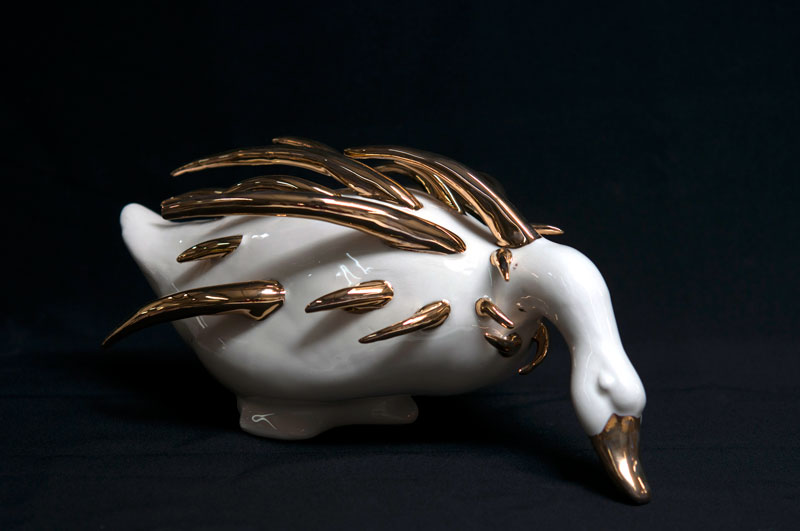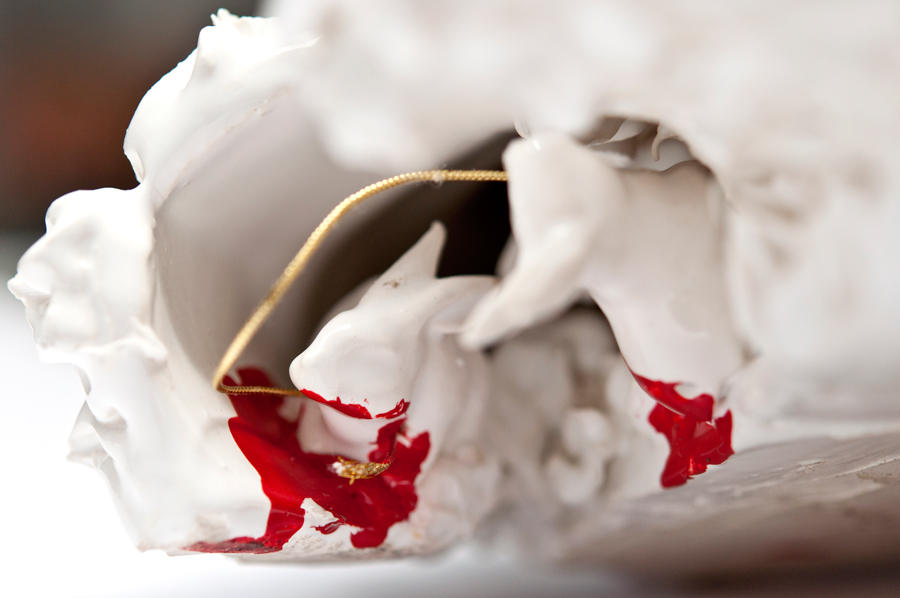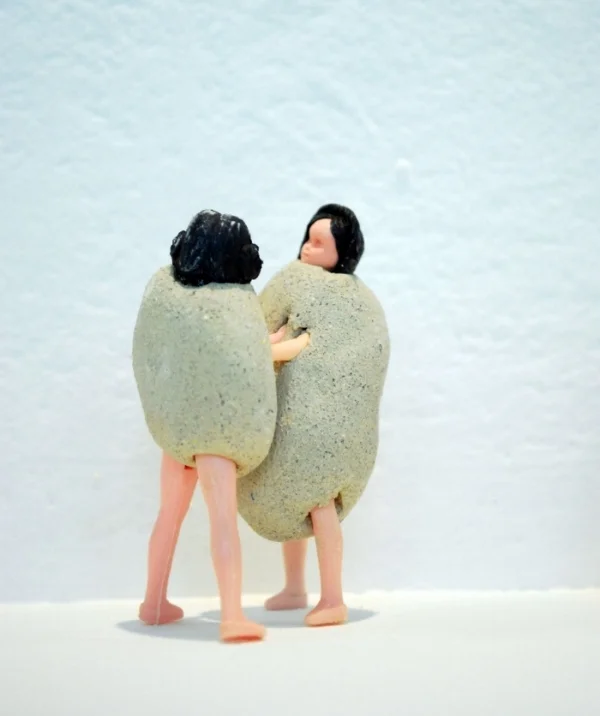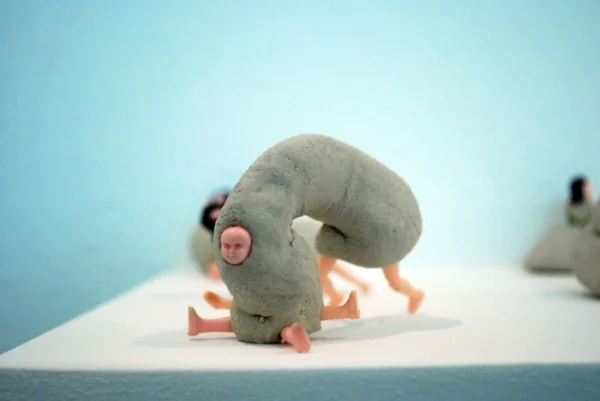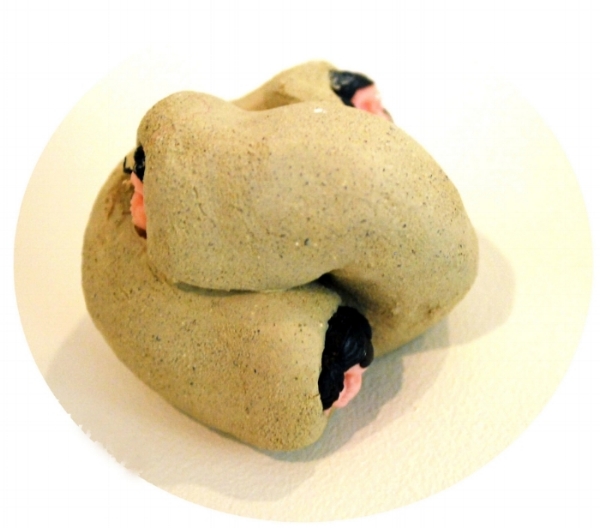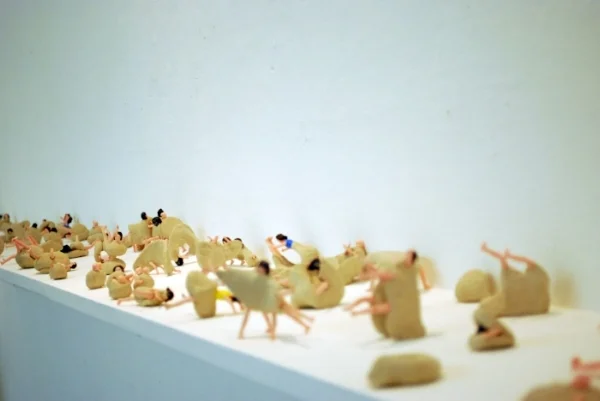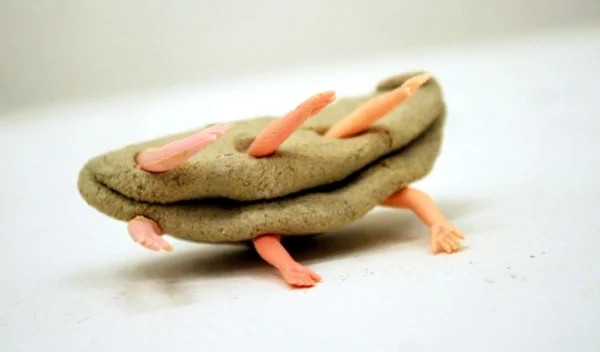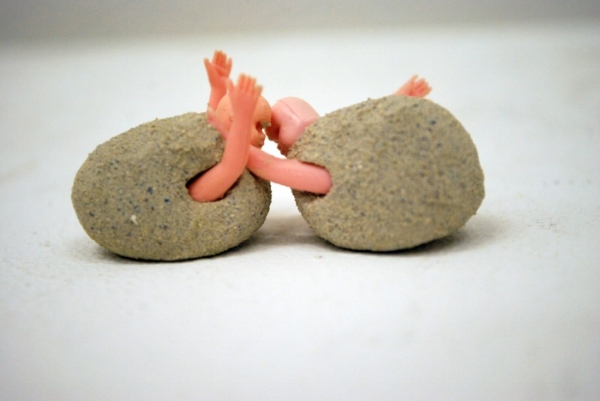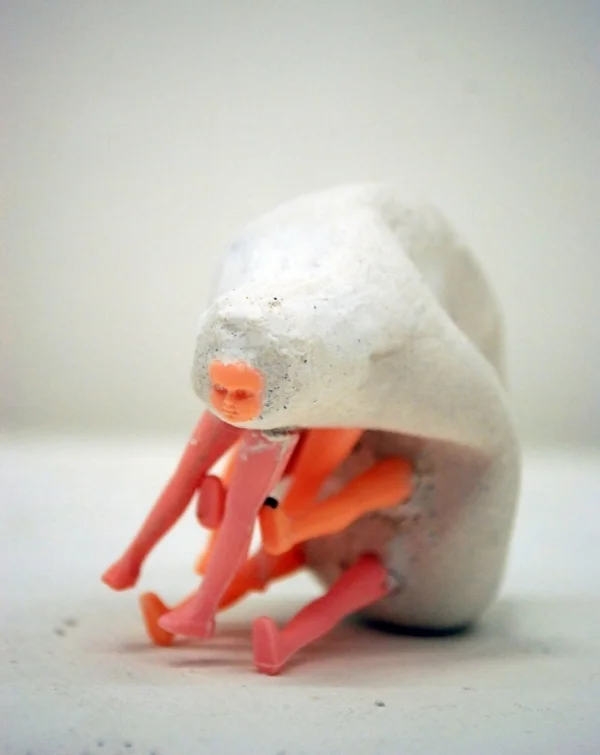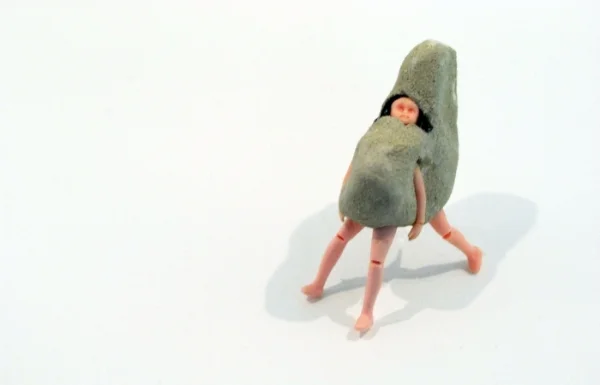Stained porcelain
Work exhibited at:
-“Taoxichuan Ceramic Art Ave. Gallery”, Jingdezhen, China. 480 x 370 cm 2019
"TXC Sundaymorning, a taste of Yaozhou Porcelain", Taoxichuan Ceramic Art Ave. Gallery, Jingdezhen, China (2019)
- "TXC Sundaymorning, a taste of Yaozhou Porcelain", Taoxichuan Art Museum, Tongchuan City, China (2020)
- "The Boundary of Porcelain", Longquan Celadon Exhibition Center, Longquan, China
ENG: MODULAR III and IV, attempts to highlight the contrast between hand-made practices versus industrial procedures, by proposing an artwork where the different ceramic modules emphasize the value of the unique piece that appears to be camouflaged in an alleged series reproduction.
This project was originated while questioning my past working method, where reproduction with molds became the core tool. Raising awareness of my own process was key to deepen into current reproduction systems, and achieving an evolved method reflected in my last series called MODULAR.
Evolved mold construction systems: The creation method began with a two-week designing phase for an altered mother mold that contained the chosen pattern. This mold included 27 interchangeable plaster pieces that could create simultaneously -at least- three molds. Each piece can be interchanged to create a new mold, leading to more than a thousand combinations.
Nine of these plaster pieces have their patterned reliefs in an inward position while the other nine are displayed in an outward position. The remaining 9 pieces have flat surfaces. As a result, this method has allowed me to continuously alter its performance.
Contextual urbanism: MODULAR III and IV are metaphorically intertwined with the concept of urbanism (a system in which houses and buildings –although singular and independent constructions- when located within proximity, generates neighborhoods, towns, and cities). In my proposal, each individual module is positioned in close proximity conforming a new corporeal frame that, at the same time, shares similarities within their material, shapes, and creation process. All these pieces are tempted, as in the city, to show their unique essence. But, forced to dialogue with the group, they are pushed to sacrifice their singularity.
In these artworks, choosing a geometrical pattern emphasizes our own industrial cultural heritage that can be well perceived in the construction of the cities. The result is a group of ceramic objects displayed in a way that can make reference to the city but observed from above, outstanding the history of our civilization and contrasting them with the authors who have left their individual mark on them.
In my proposal, each individual module is positioned in close proximity conforming a new corporeal frame that, at the same time, shares similarities within their material, shapes, and creation process.
The works guide our eyes and our bodies through its own map, helping us to re-imagine places of intimacy in the context of contemporary information-based art.
Behind MODULAR IV: For this artwork, I decided to work with a design inspired by a specific geometrical pattern taken from Latin American native minorities symbology called Chakana.
With this installation I seek to allude to the confrontation between a hiper-globalized world, with a huge loss of identity especially because the economic conglomerates which, as they start to grow and expand, absorbs, and destroy minority identities. The series reproduction system that I use represents the loss of identity in the way things are now manufactured. The concept of Urbanism and its uncontrolled expansion is a good way to make this visible. When I put a sign taken from ethnical minorities on the center of almost every piece, I recover it from the tomb and revalidate it. The relationship between the “one and only” (reflected in the exclusivity of each piece) versus the automatic series reproduction will determine the actual conflict of how our native identities try to survive inside this very alienated system.
ESP: MODULAR III y IV enfatiza el contraste entre las prácticas artesanales y los procesos industriales, al proponer una obra en la que los distintos módulos cerámicos enfatizan el valor de la pieza única, que parece camuflarse dentro de una aparente reproducción en serie.
Este proyecto surgió a partir de una reflexión sobre mi método de trabajo, en el que la reproducción con moldes se convirtió en la herramienta principal. Tomar conciencia de mi propio proceso fue clave para profundizar en los sistemas de reproducción actuales e incorporar esta vez tecnología para el desarrollo de la obra.
La evolución en el sistema de construcción de moldes:
El método de creación comenzó con una fase de diseño en la que se elaboró un molde madre modificado que contenía el patrón elegido. Este molde incluía 27 piezas de yeso intercambiables, capaces de generar simultáneamente –al menos– tres moldes distintos. Cada pieza podía intercambiarse para formar un nuevo molde, lo que permitía más de mil combinaciones posibles.
Nueve de estas piezas de yeso tienen relieves en posición interna, mientras que otras nueve los presentan en posición externa. Las nueve piezas restantes tienen superficies planas.
Urbanismo contextual:
MODULAR III y IV están metafóricamente entrelazados con el concepto de urbanismo, entendido como un sistema en el que las viviendas y edificios –aunque sean construcciones singulares e independientes–, al ubicarse en proximidad, generan barrios, pueblos y ciudades.
En mi propuesta, cada módulo individual se posiciona en estrecha proximidad con los demás, conformando un nuevo marco corporal que comparte similitudes en cuanto a material, forma y proceso de creación. Al igual que en la ciudad, estas piezas son tentadas a mostrar su esencia única, pero, al verse obligadas a dialogar con el grupo, terminan sacrificando su singularidad.
En estas obras, la elección de un patrón geométrico enfatiza nuestra propia herencia cultural industrial, evidente en la construcción de las ciudades. El resultado es un conjunto de objetos cerámicos dispuestos de una manera que remite a la ciudad vista desde arriba, resaltando la historia de nuestra civilización y contrastándola con los autores que han dejado su huella individual en ellas.
Cada módulo individual se posiciona en cercanía, formando un nuevo marco corporal que, a su vez, comparte similitudes en cuanto a material, forma y proceso de creación. Estas obras guían nuestra mirada y nuestro cuerpo a través de su propio mapa, ayudándonos a reimaginar espacios de intimidad dentro del contexto del arte contemporáneo basado en la información.
Detrás de MODULAR IV
Para esta obra, decidí trabajar con un diseño inspirado en un patrón geométrico específico tomado de la simbología de las minorías nativas latinoamericanas, llamado Chakana.
Con esta instalación busco aludir a la confrontación entre un mundo hiper-globalizado y la gran pérdida de identidad que esto conlleva, especialmente debido a los conglomerados económicos que, al expandirse, absorben y destruyen las identidades de las minorías.
El sistema de reproducción en serie que utilizo representa esta pérdida de identidad en los procesos actuales de manufactura. El concepto de urbanismo y su expansión descontrolada son una metáfora visible de esta problemática. Al situar un signo tomado de minorías étnicas en el centro de casi cada pieza, lo rescato del olvido y lo revalido.
La tensión entre “lo único” (representado en la exclusividad de cada pieza) y la reproducción automática en serie plantea el conflicto actual de cómo nuestras identidades nativas intentan sobrevivir dentro de este sistema altamente alienante.



